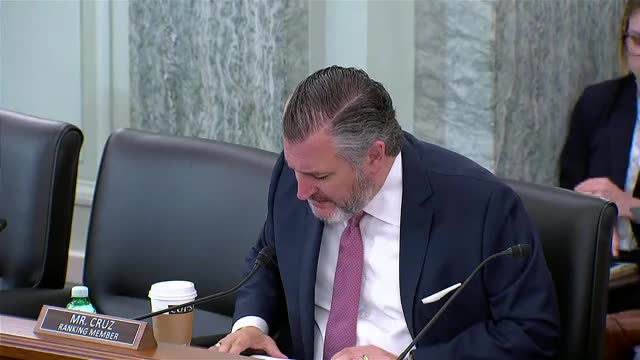Boeing faces scrutiny over missing documents in Alaska crash investigation
June 14, 2024 | Commerce, Science, and Transportation: Senate Committee, Standing Committees - House & Senate, Congressional Hearings Compilation

This article was created by AI summarizing key points discussed. AI makes mistakes, so for full details and context, please refer to the video of the full meeting. Please report any errors so we can fix them. Report an error »

In a recent government meeting, critical discussions emerged regarding Boeing's handling of documentation related to the MAX 9 aircraft involved in Alaska Airlines flight 1282. NTSB Chair Jennifer Homendy revealed that key documents are missing, raising concerns about the integrity of the investigation. It was confirmed that security camera footage had been overwritten, and Boeing is unable to identify who performed work on the aircraft's door plug, with no existing paperwork to clarify the situation.
The ongoing investigation has prompted questions about whether Boeing employees might be withholding crucial information. While the FAA is conducting its inquiry, the Justice Department has also launched a separate investigation into the matter.
The meeting also highlighted significant workforce challenges at Boeing, particularly following the pandemic. A recent Wall Street Journal report indicated that approximately half of the 30,000 union-represented employees at Boeing have less than six years of experience, a stark increase from pre-pandemic levels. This inexperience has raised alarms regarding its potential impact on safety and quality, especially in light of observations made during FAA audits.
Officials noted that the loss of experienced personnel due to early retirements and layoffs has created a knowledge gap within the company. Unlike other firms that have implemented strategies to mitigate this risk—such as re-hiring retired employees for training or adjusting requirements for new hires—Boeing has not established similar programs.
As the FAA continues its investigation, there are calls for the agency to impose new requirements on Boeing to address the inexperience on the factory floor, ensuring that safety standards are upheld in the wake of these revelations.
The ongoing investigation has prompted questions about whether Boeing employees might be withholding crucial information. While the FAA is conducting its inquiry, the Justice Department has also launched a separate investigation into the matter.
The meeting also highlighted significant workforce challenges at Boeing, particularly following the pandemic. A recent Wall Street Journal report indicated that approximately half of the 30,000 union-represented employees at Boeing have less than six years of experience, a stark increase from pre-pandemic levels. This inexperience has raised alarms regarding its potential impact on safety and quality, especially in light of observations made during FAA audits.
Officials noted that the loss of experienced personnel due to early retirements and layoffs has created a knowledge gap within the company. Unlike other firms that have implemented strategies to mitigate this risk—such as re-hiring retired employees for training or adjusting requirements for new hires—Boeing has not established similar programs.
As the FAA continues its investigation, there are calls for the agency to impose new requirements on Boeing to address the inexperience on the factory floor, ensuring that safety standards are upheld in the wake of these revelations.
View full meeting
This article is based on a recent meeting—watch the full video and explore the complete transcript for deeper insights into the discussion.
View full meeting